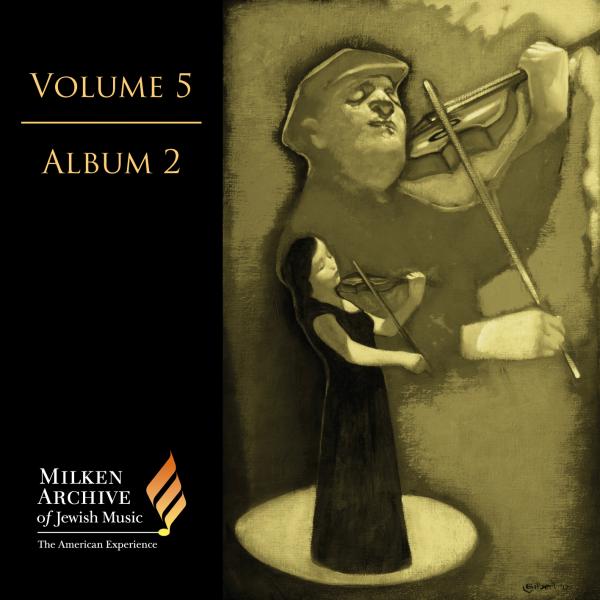Tracks
Liner Notes
Tants un Maysele (“Dance” and “Little Story”), scored for clarinet, violin, cello, and piano, was written in 1981 on commission from the Aeolian Chamber Players, whose violinist and founder, Lewis Kaplan, had requested a piece with a distinctly Jewish profile for the group’s particular instrumental combination. “I was happy to undertake that assignment,” Wyner reflected nearly twenty years later, “since in previous years I had written a number of compositions in which I had sought to synthesize contemporary aesthetic and technical thought with musical elements of clearly definable Jewish character. Turns of melody, dance rhythms, cadential figures, typical sonorities of an instrumental or ensemble nature—emerging from a body of various musics historically connected with Jewish life—were important elements in those pieces I intended to be characteristically Jewish.”
The nature and form of this two-movement piece was driven largely by Wyner’s predetermined title, taken from a pair of piano pieces with those titles, which his father had dedicated to him when he was about two years old (extracted from a series of three preludes). As a teenager, Wyner had learned to play those little pieces, which he later described as “very virtuoso Liszt-like pieces on Hassidic-type eastern European folkloristic themes.” The Aeolian commission now suggested to him an opportunity to make a gift to his father by “returning the homage of that childhood dedication.” In Wyner’s own recollection:
So I began working on a piece that would be dancelike, filled with Hassidic-type dance rhythms, but also infused with a kind of violence and peremptory rage that one would not find normally in a Hassidic dance; and, also, with a sense of extreme mystery and confusion. And particularly at the end of Tants, there is a transformation from the rage and vigor to a peculiar sense of distant mystery—of a kind of ineffable peculiarity. It becomes a dance of creatures one might find in Where the Wild Things Are; one could just imagine those creatures doing a slow dance in a dense forest. And that seemed to me to be very Kabbalistic, very much closer to a kind of dibbuk—to a mysterious creature.
The basic folklike theme in Maysele is actually Wyner’s original tune, in his assessment “a kind of polka-mazurka—slow and quiet, like many of the songs we know from eastern European repertoires.” The tune then undergoes various transformations throughout the piece. The composer has offered the following further comments:
Part of what I was writing reflected the character of the group of the Aeolian Chamber Players. But above all, I think I was reflecting my memories of that kind of music—of my father’s music—and combining it with the residue of some systematic study of eastern European Jewish folk tunes I had done more than thirty years earlier on my own.
Tants un Maysele uses as its basic material musical fragments of Jewish character: dances, melodic and harmonic turns, phrase structures and gestural inflections. If these elements are conceived of as being “realistic” (as a recognizable object in a painting is considered realistic), then the compositional process first presents, then transforms those objects into surreal or abstract shapes—some of which remain substantial, while others evaporate in a haze of mysticism or nostalgic speculation. Tants un Maysele is dedicated to my father, in return. It was the last new composition of mine he heard, just before his death in 1982.
New York Times critic Bernard Holland observed that Tants un Maysele represented its composer’s reference “back to Jewish cultural history rather than Jewishness itself.” He discerned an implied melody in Tants gradually emerging from the instruments’ initial introduction of busy, fixated movement and then standing on its own and making its own statement. And he pointed to the “consciously Brahmsian textures” in Maysele, into which the opening mournful theme in unison thickens and grows.
Credits
Composer: Yehudi WynerPerformers: Bruce Creditor, Clarinet; Jennifer Langham, Cello; Daniel Stepner, Violin; Yehudi Wyner, Piano
Publisher: Associated Music Publishers, Inc./Schirmer


